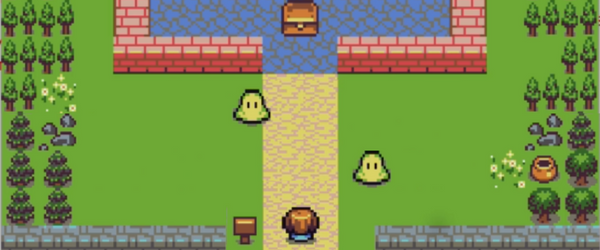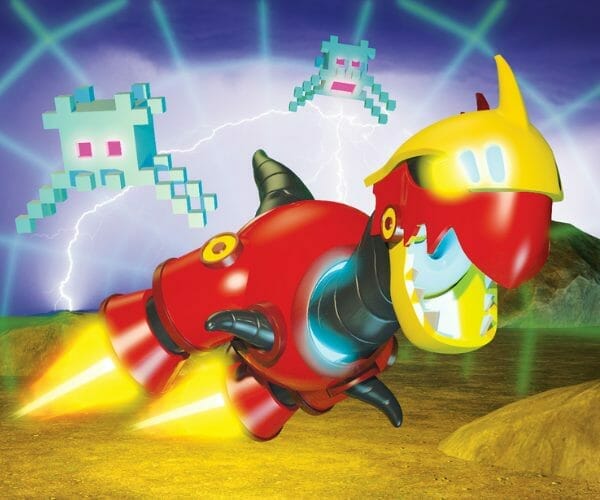Unlocking the world of game development is an exciting journey, one that opens up endless possibilities of where your creativity can lead you. Today, we’ll delve into an engaging aspect of this universe – Roblox weapon scripting. This immersive step-by-step tutorial will equip you with the fundamental skills to script a variety of weapons within Roblox, taking your gameplay or game development experiences to exciting new heights.
Table of contents
What is Roblox Weapon Scripting?
Roblox is a popular platform that allows users to create or play millions of 3D online games. Scripting in Roblox, specifically weapon scripting, is a process of adjusting a weapon’s mechanics and features through codes. It involves making the weapon respond to user interaction and perform the desired activities
The Importance of Learning Roblox Weapon Scripting
Understanding Roblox weapon scripting not only broadens the horizon for a keen game developer but also improves the overall gameplay experience for a player. This technical skills allows you to modify and customize wepons within your games, adding a unique touch. Furthermore, it’s a great way to spark up engagement, as players are often attracted to games that offer unique and personalized intearactions.
Scripting – A Gateway into Coding
If you have been contemplating trying your hands on a bit of coding, Roblox scripting is a wonderful place to start. It uses a programming language called Lua which is known for its simplicity and user-friendliness. As such, Roblox weapon scripting can be a fun way to get started with the basics of programming in a enjoyable and practical environment.
Roblox Weapon Scripting – The Basics
Let’s get started on the scripting part for a Roblox weapon. We shall begin with a simple weapon – a sword. The first step is to create the sword and add a script to it. Here is a basic example:
local sword = Instance.new("Tool")
sword.Name = "My Awesome Sword"
local script = Instance.new("Script", sword)
script.Name = "SwordScript"Here, we’ve created a sword and added a new script to it. We can now use this script to define the weapon’s interactions.
Adding a Swing Mechanism
Let’s make our sword interactive by adding a swing mechanism. We can achieve this by using Lua’s touch function:
script.Parent.Activated:Connect(function()
print("Swing!")
end)With this code, each time the sword is swung, “Swing!” will be printed to the console
Adding Damage to Your Weapon
A sword isn’t much of a weapon without a damage mechanism. Let’s give our sword the ability to ‘damage’ another object or player:
script.Parent.Activated:Connect(function()
local damage = 10
print("You've inflicted " .. damage .. " points of damage!")
end)Now, every time you swing your sword, it will inflict a certain amount of damage, which in this case is 10 points.
Adding a Cool Down Mechanism
Lastly, let’s add a simple cooldown mechanism which prevents the sword from being swung constantly:
local canSwing = true
script.Parent.Activated:Connect(function()
if canSwing then
canSwing = false
print("Swing!")
wait(2)
canSwing = true
end
end)This code snippet ensures that after every swing, the player must wait for 2 seconds before being able to swing the sword again.
Expanding Your Weapon’s Abilities
Now that we’ve covered the basics, let’s delve deeper into making our weapon more interesting. Adding dynamic features to your weapon, such as special abilities or particle effects, can make your game more engaging.
Adding a Special Strike
Let’s give our sword the ability to carry out a special strike every few swings:
local swingCount = 0
script.Parent.Activated:Connect(function()
if canSwing then
canSwing = false
swingCount = swingCount + 1
if (swingCount % 4 == 0) then
print("Special Strike!")
else
print("Swing!")
end
wait(2)
canSwing = true
end
end)This script gives a “Special Strike” every four swings, adding an interesting feature to our weapon.
Adding Particle Effects
Adding particle effects can make your weapon’s attacks stand out and look visually stunning. Here’s a basic example on how to add a particle effect to the sword each time it strikes:
local particleEmitter = Instance.new("ParticleEmitter", sword)
script.Parent.Activated:Connect(function()
if canSwing then
canSwing = false
particleEmitter:Emit(30)
wait(2)
canSwing = true
end
end)We’ve created a new particle emitter and each time the sword swings, 30 particles are emitted, creating a unique visual effect.
Creating Range Attacks
Why only limit ourselves to standard sword strikes? We can also add ranged attacks to our arsenal. Here is a simple scripting example to implement such a feature:
script.Parent.Activated:Connect(function()
if canSwing then
canSwing = false
local projectile = Instance.new("Part", game.Workspace)
projectile.CFrame = script.Parent.Handle.CFrame
projectile.Velocity = script.Parent.Handle.CFrame.lookVector * 100
wait(2)
canSwing = true
end
end)This script shoots out a projectile from the sword each time it’s activated, building a ranged attack feature into the weapon’s abilities.
Roblox weapon scripting offers endless opportunities to make weapons that are fun, interactive, and unique. We’ve only scratched the surface of what you can achieve. Learning these skills can truly amp up your game design and it ensures that your players will have an immersive and exciting experience in your games.
Adding a Special Ability
Let’s make our weapon even more special by adding an ability that can be triggered by the user’s input. We’ll use Roblox’s UserInputService for this:
local UserInputService = game:GetService("UserInputService")
UserInputService.InputBegan:Connect(function(input, gameProcessedEvent)
if input.KeyCode == Enum.KeyCode.Q then
print("Special Ability Activated!")
end
end)This script allows the user to activate a special ability by pressing the ‘Q’ key, which can eventually lead to effects such as temporary invincibility, increased damage, or a powerful area attack.
Introducing Health Mechanism
Another crucial aspect of game development is introducing a health mechanism to characters. For weapon scripting, this provides the much-needed damage function. Here’s how we can implement it:
local function onPartHit(otherPart)
local character = otherPart.Parent
local humanoid = character:FindFirstChild("Humanoid")
if humanoid then
humanoid:TakeDamage(10)
end
end
sword.Handle.Touched:Connect(onPartHit)With this, every time the sword ‘touches’ another part (which can be another player’s character), it inflicts 10 points of damage to that character’s humanoid.
Introducing Healing Mechanism
Just as inflicting damage is essential, adding a healing or recovery feature balances gameplay mechanics. It keeps the game challenging yet achievable. Here’s how to go about it:
local function onPartHit(otherPart)
local character = otherPart.Parent
local humanoid = character:FindFirstChild("Humanoid")
if humanoid then
if humanoid.Health < humanoid.MaxHealth then
humanoid.Health = humanoid.Health + 10
end
end
end
sword.Handle.Touched:Connect(onPartHit)In this scenario, every time the sword ‘touches’ another part, it restoring 10 health points to the humanoid.</p.
Adding Sound Effects
Finally, adding sound effects can imbue your weapons with a realistic touch, making the gameplay experience even more immersive. Here’s how we can implement sound effects:
local swingSound = Instance.new("Sound")
swingSound.SoundId = "rbxassetid://301964589"
swingSound.Parent = sword.Handle
script.Parent.Activated:Connect(function()
if canSwing then
canSwing = false
swingSound:Play()
wait(2)
canSwing = true
end
end)This script creates a new sound that plays every time the player swings their sword. Be sure to replace “rbxassetid://301964589” with the ID of the sound you want to use.
Mastering these advanced elements of Roblox weapon scripting will truly unlock new dimensions of creativity in your game development journey, making your games as engaging and immersive as can be.
Time to Soar Even Higher
Conquering the realm of Roblox weapon scripting is no small feat and we applaud your zealousness and relentless learning spirit. But, why stop here? Let’s keep the learnings paramount and the spirit of mastering Roblox unstinted.
The potent combination of excitement and expertise is what lays the foundation of an accomplished game developer. And to help you unleash this potential, we bring to you our high-quality, comprehensive and accessible Roblox Game Development Mini-Degree program. This Mini-Degree is your gateway to the fascinating world of game creation using Roblox Studio and Lua- the very essence that wraps up the joy of Roblox. The course envelopes various intriguing aspects like scripting, melee games, first-person shooter games and more, promising you a learning experience like never before.
In addition to our Mini-Degree program, we also have a wide range of Roblox courses which cater to beginners and those who’ve already mastered the basics alike. These courses will further enhance your Roblox development skills, promising you an exciting path in your game development journey.
We at Zenva, are dedicated to inspiring your journey from being a beginner to a professional with over 250 supported programming, game development, and AI courses. So let’s keep the coding torch alight and march ahead to conquer the coding world, one line at a time!
Conclusion
Embarking on the Roblox weapon scripting adventure is like unlocking a new realm of possibilities. It intertwines creativity and logic, architecture and aesthetics, coding and conceptualizing in a way that nothing else does.
Whether you’ve followed along our journey for the sheer love of coding, fascination for Roblox, or the aspiration of becoming a remarkable game developer, we hope that this guide has ignited a spark. To fuel this desire for learning and sculpting amazing virtual experiences further, we invite you to begin or continue your journey with our Roblox Game Development Mini-Degree program. We look forward to helping you make strides in your programming journey, powering your dreams one line of code at a time!
Did you come across any errors in this tutorial? Please let us know by completing this form and we’ll look into it!

FINAL DAYS: Unlock coding courses in Unity, Godot, Unreal, Python and more.







